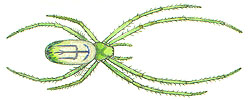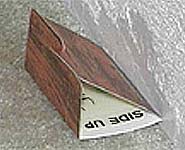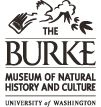 |
|
| You Are Here: Burke Museum : Spider Myths : "Dangerous" : Amputate |
Myths about "Dangerous" Spiders
Myth: People have lost arms and legs because of spider bites.
Fact: Probably everyone who reads a lot of newspapers
has seen one of these stories, which crop up every few years. There is rarely
a real spider associated with such cases, which basically result from physicians'
near-total lack of spider training and from the news media's love of "scare
stories."
I don't have full details of cases that happened in other parts of the country,
but it is certain that spiders did not cause the two most notorious cases in
Washington State. In one case in the late 1980s, an unknown spider bit a man
working under a filthy derelict car in Morton, Washington. Becoming ill, he
was rushed to Harborview Medical Center in Seattle, where eventually an arm
was amputated. All the local media blamed the spider with great gusto. None
of them published any correction when lab work revealed that the puncture had
become infected with Clostridium perfringens, a gangrene-causing bacterium,
and the man's symptoms were not caused by the spider
venom at all.
On January 1st, 2001, a man in Mount Vernon, Washington woke up with one of
those "mystery bites." The man was apparently
already under treatment for some condition that compromised his immune system.
The man's doctors (who, as usual, knew nothing of spider geographic distribution)
immediately blamed the mythical "brown recluse"
spider for the resulting illness. Later they backtracked and started blaming
the hobo spider, which at least occurs in the area --
but not at that season! It is simply not possible that either species was present
at the time and place when the man received his "bite." My belief
is that the subsequent bilateral amputation had nothing to do with the "bite."
But spiders cannot be sued for malpractice and cannot sue for defamation of
character, so they make convenient scapegoats. One newspaper used the remarkably
foolish headline "Spider takes legs of Skagit County man."
Myth: Spider "infestations" should be controlled with pesticides.
 |
|
Hobo spider trap photo courtesy hobospider.com |
Fact: Where to begin? Since spiders are predators,
they don't infest anything. Apparent sudden increases in population are really
just temporary increases in activity, usually connected with mating. Since nearly
all spiders are harmless and beneficial, it doesn't make much sense to talk
about "controlling" them; the spiders themselves are the best pest
controllers!
If for some hard-to-imagine reason a situation really does arise where spiders
must be eliminated from an area, pesticides are definitely not the way to go.
An honest, properly trained exterminator will tell you this, but there are far
too many who are trained only in how to market and apply pesticide treatments.
Spiders do not react as strongly to "residual" insecticides as insects
do; these chemicals will kill the spiders contacted directly by the spray, and
that's about all. Spiders are highly mobile and quickly repopulate any area
from which they have been eliminated. And spider egg sacs are relatively
impervious to pesticides.
Sticky traps (right) remove many more spiders
than typical pesticide treatments, and have the added advantage of neither polluting
the environment nor making your home toxic. But an even better technique is
to physically exclude spiders from the space where you don't want them, by sealing
gaps, cracks and openings of all kinds.
| Previous Myth | Myths Home | Web Resources | First Myth |
 |
Text ©
2003, Burke Museum of Natural History & Culture, University of Washington, Box 353010, Seattle, WA 98195, USA Phone: 206-543-5590 Photos © as credited |
Queries
to Spider Myths author, Rod Crawford This page last updated 1 September, 2010 This site best viewed at 800 x 600 using IE 5.0 or above. |